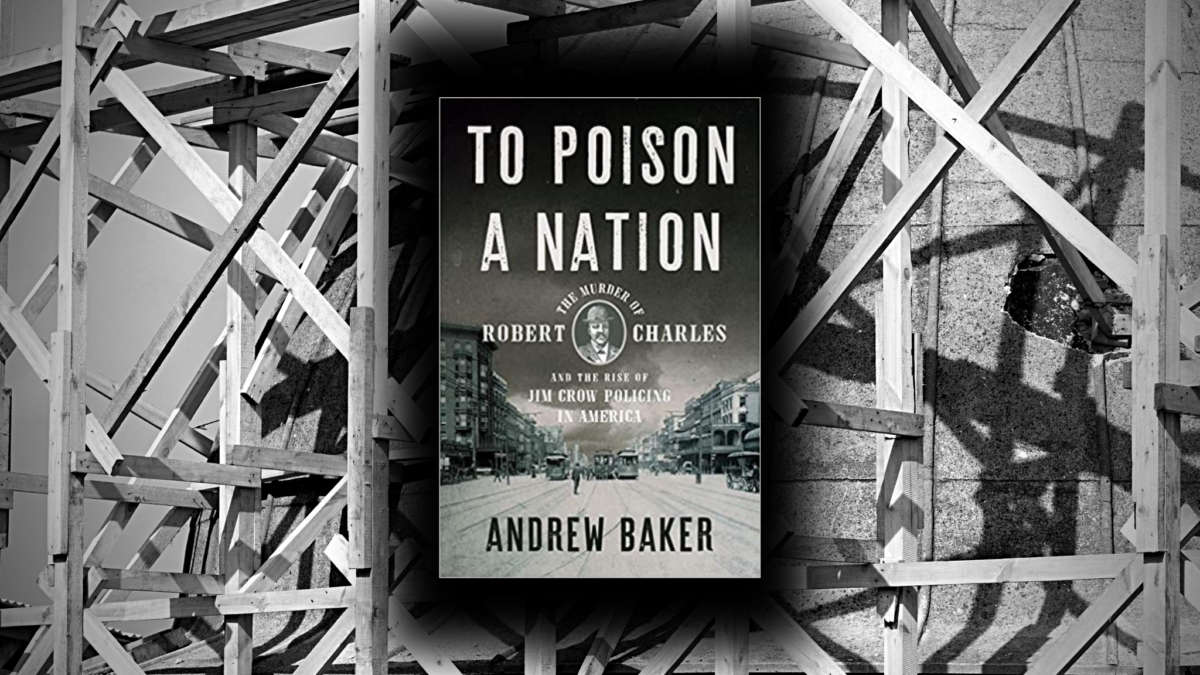To Poison a Nation
Written history that starts with a seemingly insignificant incident is often more enlightening than a sweeping narrative. Such is the case with To Poison a Nation: The Murder of Robert Charles and the Rise of Jim Crow Policing in America (The New Press), a stunning new book by Andrew Baker, a history professor at Bates College and scholar of the post-Reconstruction South.
The story opens with Robert Charles, a 27-year old Black man carrying a Winchester rifle, fleeing a shoot-out at a railroad depot where he and his brother work as laborers. Like thousands of Black men born at the end of the Civil War, Charles once harbored hope for success in the changing world, albeit one still ruled by white people: yet little would change. Charles encountered, at every turn, “starvation wages, dismal conditions, no chance of getting ahead,” writes Baker. That fate, the stranglehold of white supremacy and the ongoing violation of civil rights would underlie Charles’s growing desperation. As Baker leads the reader across a century, from the 1870s to the 1970s, he demonstrates how Jim Crow transformed itself in the modern era but never went extinct.
A LIFE LIVED IN FEAR
Born in 1865 on the Bayou Pierre in southwestern Mississippi, Charles grew up sharecropping with his parents, brothers and sisters, and learned to read and write at an early age. They all lived in fear. White paramilitary groups flourished, stirring panic with massacres and assassinations, driving Black families to hide in the “dismal swamps” that Baker evokes. At the age of 17, Charles decided it was time to leave the farm and rural life. Working on the Vicksburg waterfront and tangling with fellow workers and the police toughened up Charles, who made his way to New Orleans in the mid-1890s. This “city on the edge,” as Baker describes New Orleans in agile prose, “had a bone-chilling reputation” for crushing souls. Fraught with tension that created “a complex and combustible society,” it was, at the time of Charles’ arrival, emerging from a harsh economic depression.
At the end of the nineteenth century, as unions increasingly challenged the status quo, New Orleans’ recovery depended on a compliant working class. Whites were wary of finding common ground with impoverished Black laborers, and Black dockworkers, streetcar conductors and waterfront tradesmen were leery of reforms that rarely improved their lives.
CRIME AND PUNISHMENT
Late in the evening of July 23, 1900, Charles and his roommate, a younger man named Pierce, were waiting for two young women, one of them Charles’ girlfriend, to return home. Since the police continually patrolled Black neighborhoods, it is not surprising that three policemen approached, interrogated and attempted, without cause, to arrest the two men. Under attack, Charles drew a gun and shot one of the policemen. Fleeing the scene, he would become the target of a three-day dragnet that intensified by the hour. Meanwhile, bloodthirsty white mobs reacted with random beatings, house burnings, and murders of Black men, women, and children in the districts where they lived and worked.
Even among the Black population of New Orleans, for whom debasement constituted a way of life, the rampages brought unspeakable terror as masked vigilantes invaded homes and businesses. The terror continued even after Charles, who by now appeared to have preternatural powers as he outran and outgunned the police, died when a white medical student and member of a volunteer police force fired several rounds into him at close range.
SHEDDING LIGHT ON A LEGACY
The siege only briefly drew national attention, but the story stayed alive in New Orleans. Ida B. Wells-Barnett, a brilliant Black investigative journalist and civil rights activist, published Mob Rule in New Orleans: Robert Charles and His Fight to Death, a pamphlet widely read in the Black community, which portrayed Charles as a hero. Among whites, the story became the justification for continued intimidation, and violence against the “criminal class of Negroes” described by the editors of the New Orleans newspapers; Baker argues that such justification persists today in “Jim Crow policing.”
An untold number of Black lives were lost in the course of the 35 short years that Robert Charles lived. Wells-Barnett, who led an anti-lynching campaign, included a table of “Negroes murdered by mobs” in her booklet about Charles. The three-day manhunt in New Orleans in July of 1900 is one of the hundreds of mass assaults on Black Americans. Author Andrew Baker, who spares no detail, lays bare its legacy.




